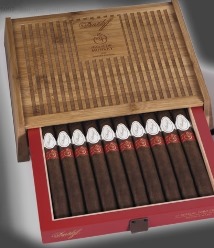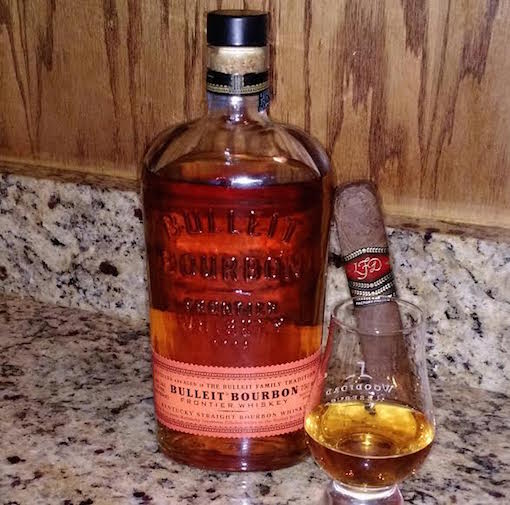Last week I found myself in New Hampshire and had a chance to sit down with Steve Saka. Saka is head of the newly launched Dunbarton Tobacco & Trust (DTT) and former CEO of Drew Estate—where he played a critical role in growing the company into a Nicaraguan juggernaut that makes some of the most sought-after cigars in the world.

We met at Twins Smoke Shop in Londonderry (about 40 minutes from Saka’s home in Dunbarton), an outstanding tobacconist/cigar bar that’s home to Kurt A. Kendall’s 7-20-4 brand. It was a great opportunity to talk tobacco, try the new Sobremesa (it’s outstanding, as you’d expect), and get caught up on all things DTT.
Stogie Guys: It seems like your debut brand, Sobremesa, did well at the IPCPR Trade Show in New Orleans this summer. How many inaugural accounts did you open?
Steve Saka: We currently have 108 active accounts, and 126 on an active waiting list. We have inquires by another 19 accounts pending.
SG: What does the current production for Sobremesa look like? Are you planning to ramp up output to meet the high demand?
SS: We are currently slated to produce 1,000 boxes per month. Even though we are grossly oversold, we will not be increasing this production in the near term. The reason is not to limit the brand; I am a capitalist so my intent is to always make and sell more cigars. The reason for the limitation is twofold.
First, I want to ensure we maintain steady production. In my opinion, great cigars are crafted when the torcedors are working on the same liga and same vitola every single day at a steady pace. I personally do not believe in “batch†handmade cigar manufacturing or spiking production to satisfy a short-term demand. Doing so sacrifices quality.
Second, I currently have enough properly fermented and aged materials available to make about 300,000 Sobremesa. I never want production to outpace ready-to-use leaf and force us to cease rolling to wait on leaf. Sometimes things happen beyond your control tobacco-wise that force you to stop production for the integrity of the brand, but in this case, I know what we have and it is critical to me to do my best to plan accordingly. In Feb./Mar. 2016 the second pilon of ECH Grade 1 Dark Rosado capa should be ready to use. If this ends up being the case, we will then begin to increase the production accordingly.
SG: Have you already begun thinking past Sobremesa on other blends?
SS: I have secured tobacco for the second liga DTT intends to release and it will be made with Connecticut Broadleaf capa. I am in the process of working on this blend. There is no release timetable—when it is right we will offer it.
SG: Do you know what this new blend will cost?
SS: There is not currently a pricepoint on this second release. I never think about crafting cigars in the terms of trying to hit a particular market segment. My approach is simple: I start with tobacco I like and an idea of what type of cigar I wish to create: strong, mild, sweet, peppery, nutty, rustic, refined, etc. I then work with the leaf to come up with a blend I find satisfying to me, and sometimes during the course of the blending process the leaf can take me in a totally different direction, but to an unexpected great destination.
This is the reason I never like to talk about what a cigar “will be†or even share the blend with others to taste test during the process. Once the cigar itself is 100% done I then figure out what it costs to make it on an ongoing basis and add reasonable profit, and that is how I come up with the price. Then it is up to consumers to decide whether they feel the experience it delivers is worth its cost. If they do, I am grateful and continue making the cigar. If not, I continue to work hoping they find my next offering worthy of their hard-earned dollars.
I think most new cigars being made today are being made to hit a certain pricepoint, or to appeal to a certain consumer demographic. Way, way too many cigars are being created in conference rooms first these days, rather than by artisans in tobacco and cigar making. I think they are totally missing what makes handmade cigars so magical and, in turn, are unlikely to be successful long-term.
SG: Will this second blend also be made at Joya de Nicaragua?
SS: I am working on this particular blend at the NACSA factory. It is best known for making economy price handmade cigars, however we are working together to create a cigar that I would personally smoke daily. They are very committed to this project and have hired Raúl Disla to join the team and work in the factory with me. Sr. Disla is the former general manager of production at A.J. Fernandez; happens to be the brother of Esteban Disla, the much heralded master cigar maker from RoMa Craft; and is an extremely talented master cigar maker in his own right.
It meant a lot to me to get people to think about Drew Estate as much more than just an infused cigar maker, and I feel the same way about NACSA. I believe this factory is capable of producing something totally unexpected in the premium handmade segment and I am honored to be working with them as we strive toward doing so.
SG: What else does the future hold for DTT?
SS: I am in the process of sourcing tobaccos for a future third liga. I have not formally decided where I will be crafting this blend, however I am so incredibly impressed by the workmanship and dedication to my exacting standards that Joya de Nicaragua has exhibited in the execution of Sobremesa that it is my sincere hope it is with them. Whether they agree, I don’t know because I am, admittedly, a total pain in the ass.
StogieGuys.com joins cigar fans throughout the country in eager anticipation of Sobremesa arriving at their local tobacconists. We wish Steve Saka the best and thank him for his time.
–Patrick A
photo credit:Â Dunbarton Tobacco & Trust


 1) Davidoff has announced a limited edition cigar called Chinese Year of the Monkey 2016. The toro (6.5 x 50) will feature a pigtail cap, a Habano Rojiza Corte 3 wrapper, a Mexican binder, and a blend of filler tobaccos from Nicaragua, Peru, and the Dominican Republic. It will be packaged in bamboo boxes of 10 (only 8,500 boxes) and be available at tobacconists starting in November for $340, or $34 per cigar. “Davidoff found its inspiration for this new 2016 Limited Edition in the character traits of the Chinese zodiac sign of the Monkey and in the noble material associated with the cultures of South and East Asia—bamboo,â€Â said Charles Awad, senior vice president of marketing and innovation at Oettinger Davidoff AG.
1) Davidoff has announced a limited edition cigar called Chinese Year of the Monkey 2016. The toro (6.5 x 50) will feature a pigtail cap, a Habano Rojiza Corte 3 wrapper, a Mexican binder, and a blend of filler tobaccos from Nicaragua, Peru, and the Dominican Republic. It will be packaged in bamboo boxes of 10 (only 8,500 boxes) and be available at tobacconists starting in November for $340, or $34 per cigar. “Davidoff found its inspiration for this new 2016 Limited Edition in the character traits of the Chinese zodiac sign of the Monkey and in the noble material associated with the cultures of South and East Asia—bamboo,â€Â said Charles Awad, senior vice president of marketing and innovation at Oettinger Davidoff AG.
 Many know Joya is the oldest cigar maker in Nicaragua. Fewer are aware of how Joya’s legacy is intertwined with the political unrest in Nicaragua in the 20th century. When you think Joya, you probably don’t think of Anastasio Somoza Debayle, President Nixon, or the Sandinista Popular Revolution. You probably think of brands like CyB, Joya Red, Cabinetta, Cuatro Cinco, and Antaño 1970.
Many know Joya is the oldest cigar maker in Nicaragua. Fewer are aware of how Joya’s legacy is intertwined with the political unrest in Nicaragua in the 20th century. When you think Joya, you probably don’t think of Anastasio Somoza Debayle, President Nixon, or the Sandinista Popular Revolution. You probably think of brands like CyB, Joya Red, Cabinetta, Cuatro Cinco, and Antaño 1970.



 Patrick Ashby
Co-Founder & Editor in Chief
Patrick Ashby
Co-Founder & Editor in Chief Patrick Semmens
Co-Founder & Publisher
Patrick Semmens
Co-Founder & Publisher George Edmonson
Tampa Bureau Chief
George Edmonson
Tampa Bureau Chief